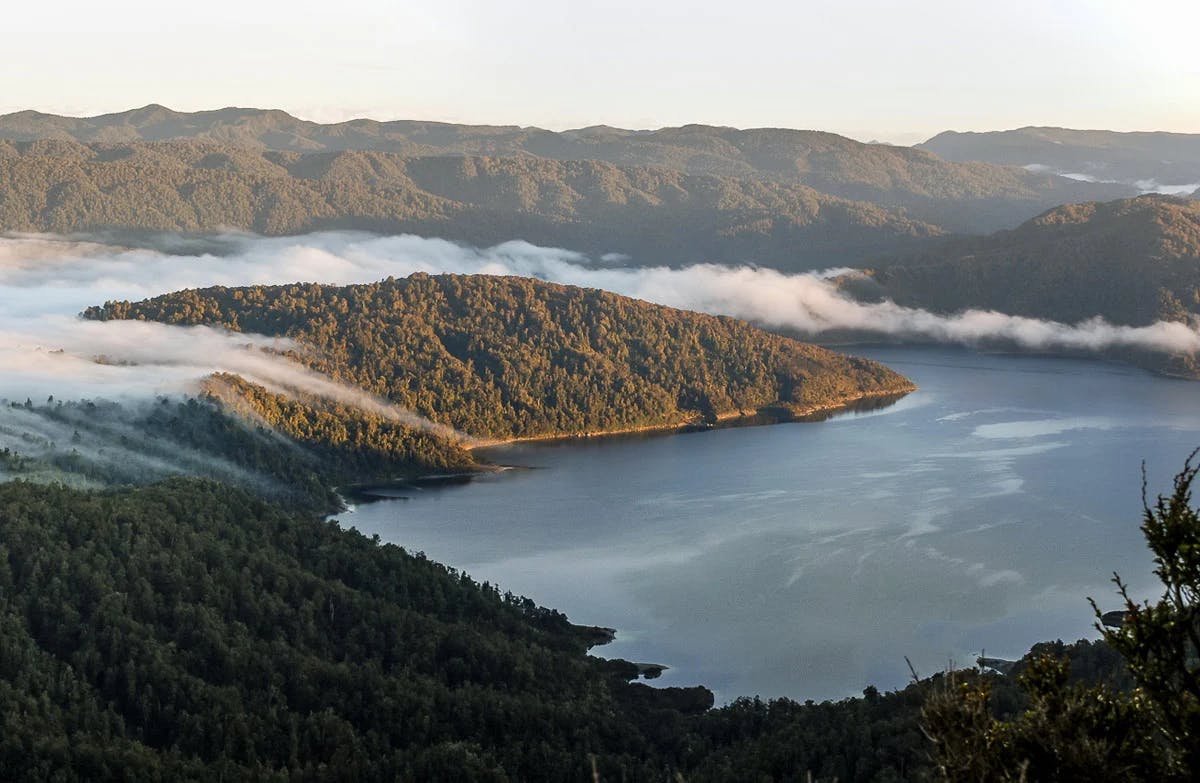A wrap of the biggest stories and best writing about the outdoors from New Zealand and around the world.
Huge change is afoot in Te Urewera, as Tūhoe plans to remove 48 backcountry huts this summer and replace them with ‘bespoke facilities’ – plans that have approval from DOC and conservation minister Poto Williams.
Te Uru Taumatua, the iwi’s operations arm for the park, told Stuff that these huts were at the end of their life and most were rarely visited.
“Backcountry huts will be replaced with bespoke facilities that will be able to be used, and enjoyed, more often and by more locals and visitors,” the iwi spokesperson said.
However, we don’t know how many structures will be built in their place or the expected timeline for the rebuild.
Te Uruwera was handed back to the Tūhoe people in 2014 after previously being made a national park. Conservationist Pete Shaw, who formerly worked as a DOC ranger in the national park, describes this as “…the biggest case of backcountry vandalism ever committed in New Zealand being promulgated by the government department charged with the role of preserving those same structures, without consultation.”
He told RNZ: “What they’re doing is they are taking out the access. Anyone that uses Te Urewera, if they’re overnighting, 90 percent of them will be staying in the huts. If you take out the huts, you’re taking out access for the users of Te Urewera. It’s deliberate because they want to exclude anyone who is not Tūhoe.”
But DOC’s director general Penny Nelson said the department fully supports the plans: “The intention is that new structures will increase, rather than limit, the accessibility of these backcountry areas for locals and manuhiri (visitors), which DOC sees as an exciting part of the board’s vision for Te Urewera.”
Read more details on this story at Stuff and RNZ.
Rescued, thanks to ‘Help’ sign made from toilet paper
A smart-thinking tramper who got stuck in Tararua Forest Park used toilet paper to help rescuers locate him.
The Wellington man hadn’t made contact with his family as planned during a five-day tramp and didn’t have a locator beacon.
He found himself in conditions beyond his tramping experience and stayed at Mid Waiohine Hut for several nights, where he made a ‘Help’ sign. This helped rescuers locate him and the man was flown out by helicopter. Read more on this at Stuff.
Main body of Abel Tasman Coast Track to be re-opened by summer
Those hard at work restoring the damaged parts of Abel Tasman Coast Track are confident it should all be open again by mid November.
The only section that’ll need longer is the high tide track at Torrent Bay, as this has a dangerous slip with “rocks the size of Volkswagens sitting at the top”, according to DOC operations managers in Motueka, Mark Townsend.
Currently there are four sections of track that are shut – Coquille Bay to Anchorage, high tide track from Anchorage to Torrent Bay, Medlands to Bark Bay and Tonga Quarry to Onetahuti Bay.
The logistics are tricky, with diggers working on the side of bluffs, and some needing to be carried in by heavy lift helicopters.
“We’ll definitely have the main body of the track open by summer,” said Townsend. “I’m hoping by Labour Weekend we will have a track from Bark Bay through to Anchorage and out to Mārahau open.” Read more at Stuff.
Dozens killed in Himalayan avalanche
At least 26 people have died in a colossal avalanche near the top of Mount Draupadi ka Danda II in the Indian Himalayas.
A group of 41 climbing trainees were approaching the summit along with their instructors when they were hit by the snow slide.
Sunil Lalwani, a trainee trainee climber who survived, said: “We were 50-100 metres from the summit with our instructors ahead of us, when suddenly an avalanche hit us and took everyone down. It happened in a matter of seconds. We were somehow able to breathe. It’s because of them (the instructors who tried to rescue people after the event) that we are alive today.” Read more here.
The North Face renaming a classic out of respect for the Sherpa people
You may well be familiar with The North Face’s Sherpa Fleece products. They’re somewhat iconic and you may have some in your wardrobe.
But from now on, the thick material that imitates the fabrics traditionally worn by Sherpa people, will now be known by the company as ‘high pile’.
Companies and brands have often used the name Sherpa, after the people who live in high-altitude parts of Nepal and are renowned for helping to develop mountaineering in the region.
But some in the community feel liberties are being taken with the use of their name, and The North Face want to remain highly respectful of their culture. “We just wanted to be more true to our own connection to the [Nepalese] community, and we wanted to have a better reflection of that,” Eric Raymond, The North Face’s director of social impact, told NBC News. Read more at Backpacker.







